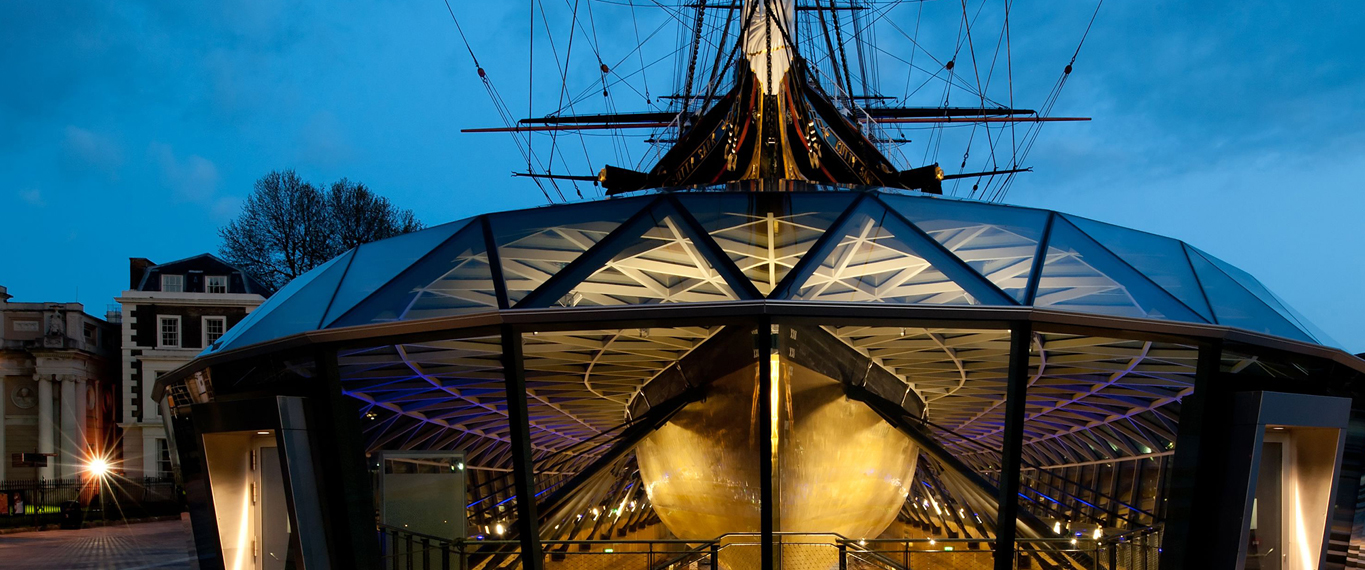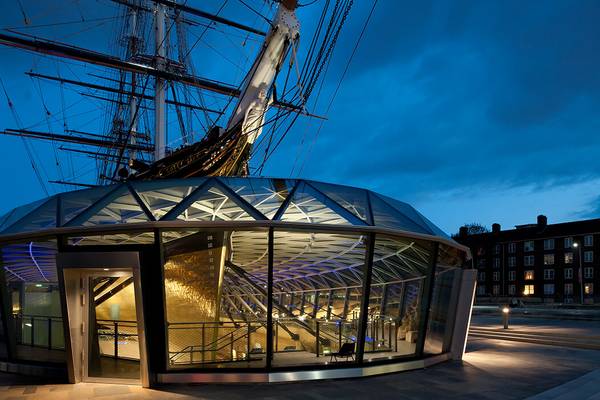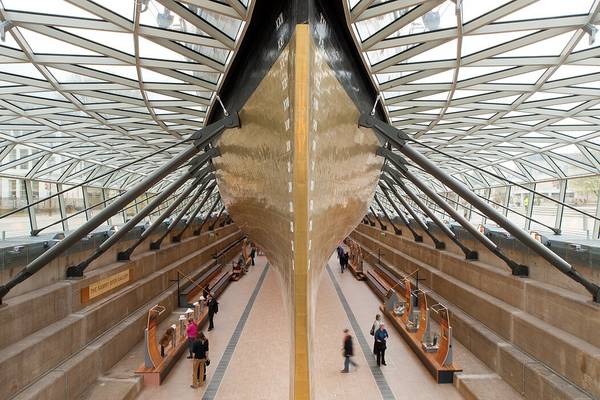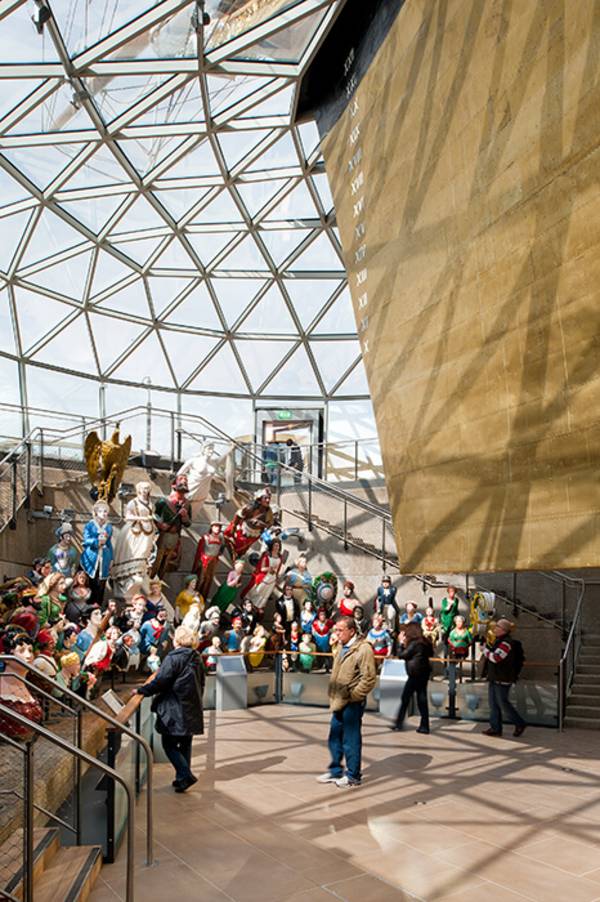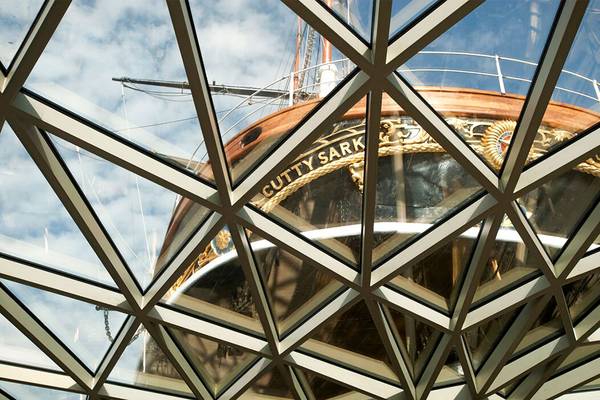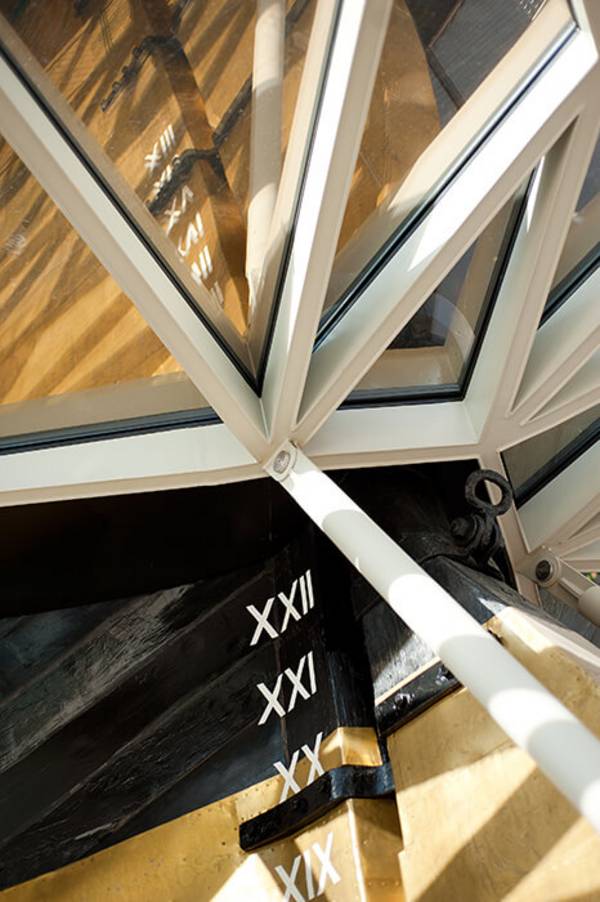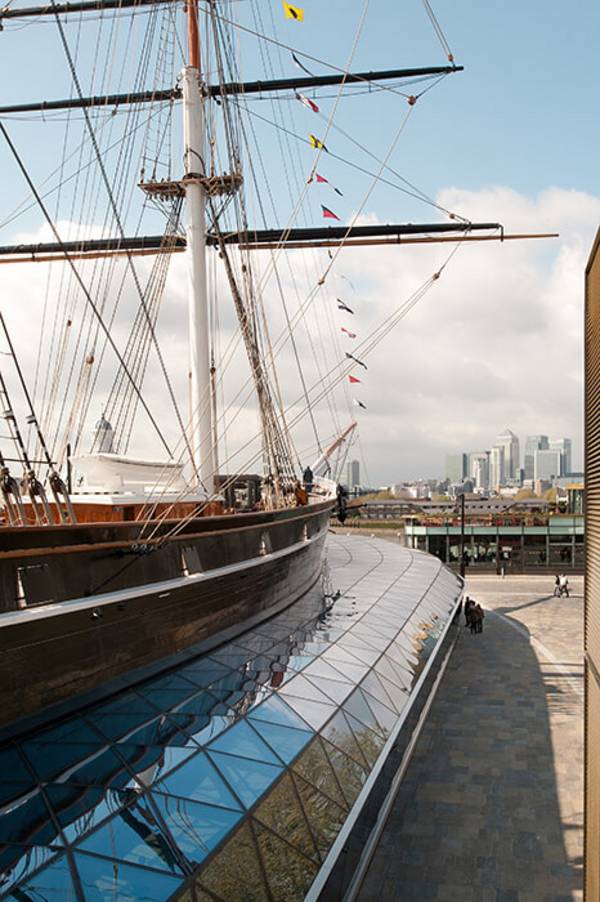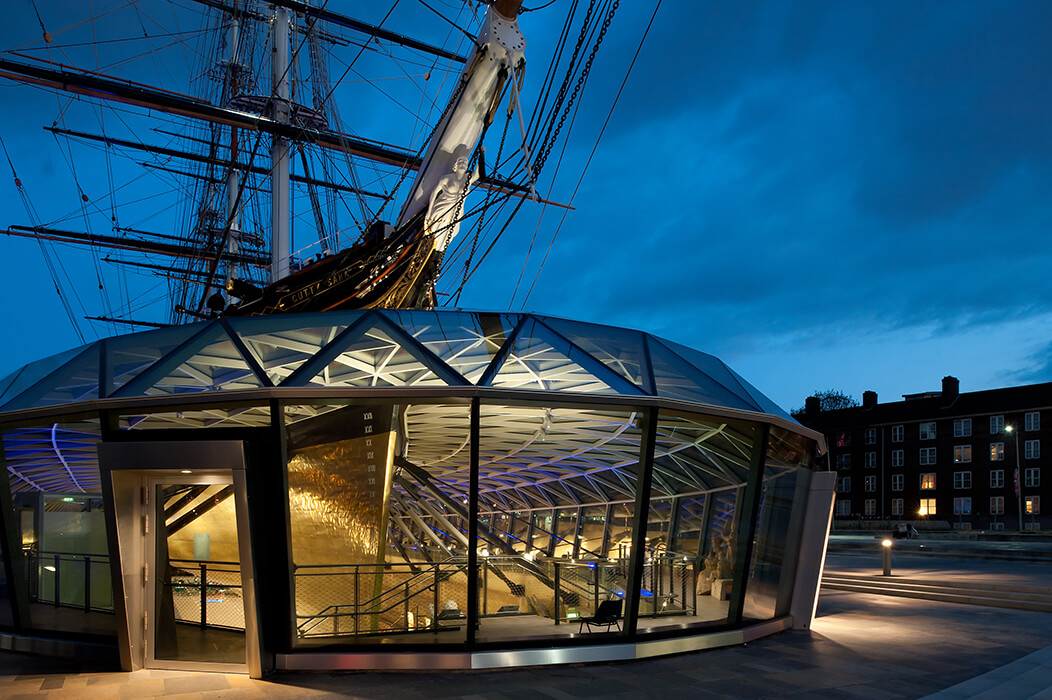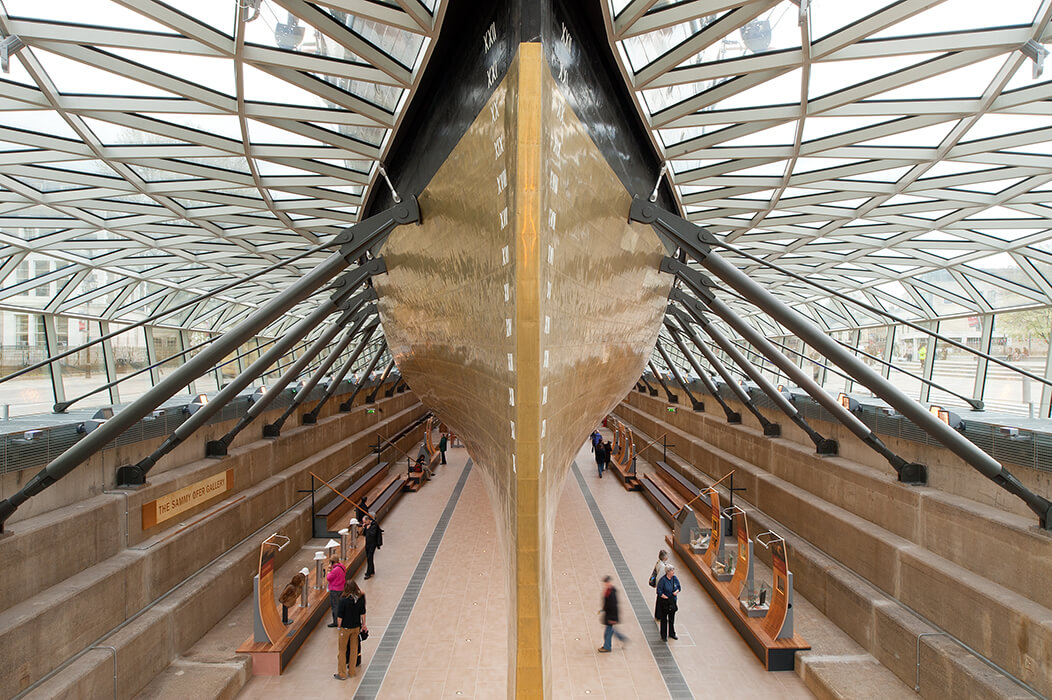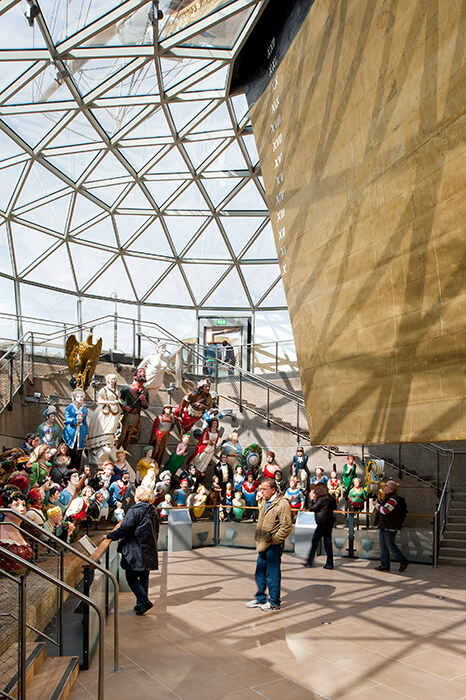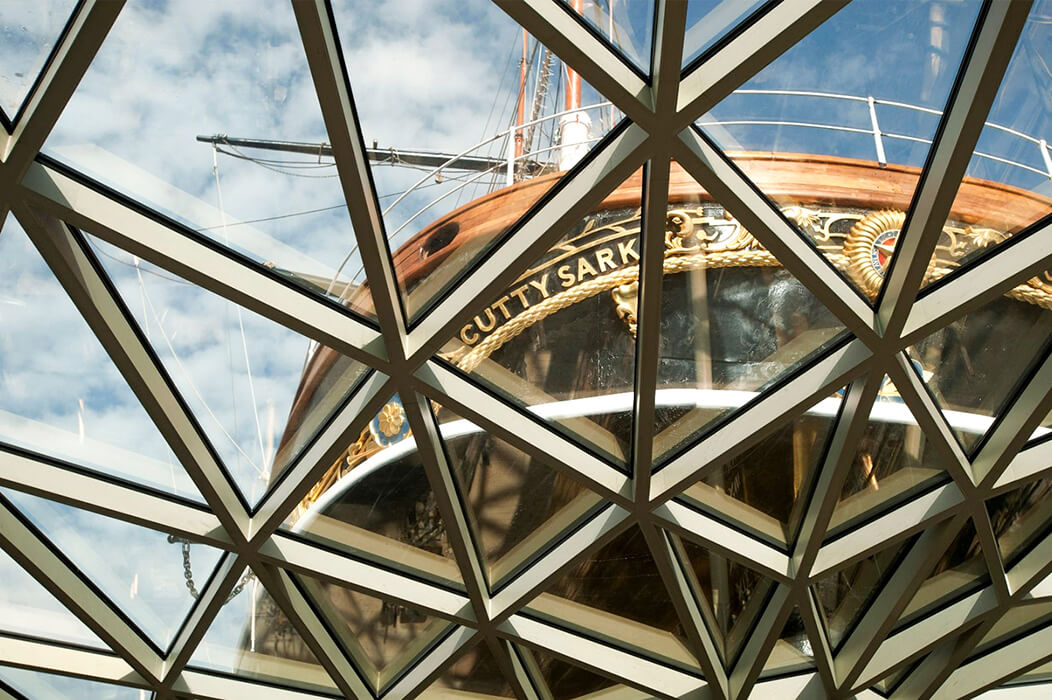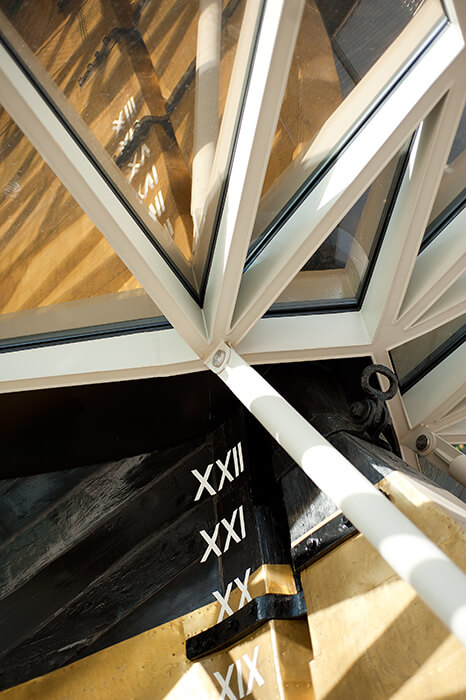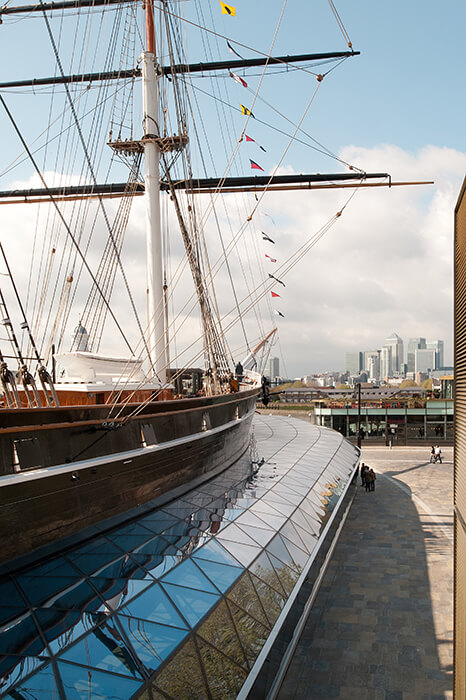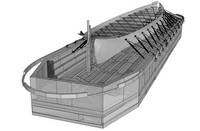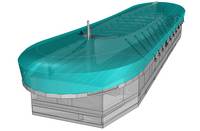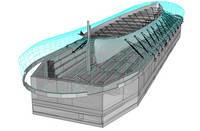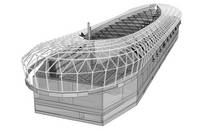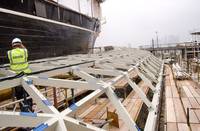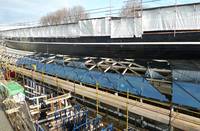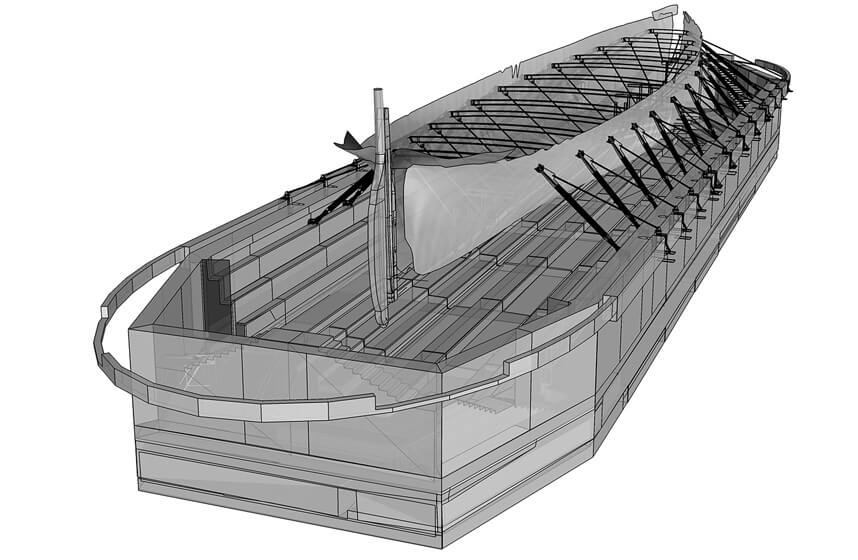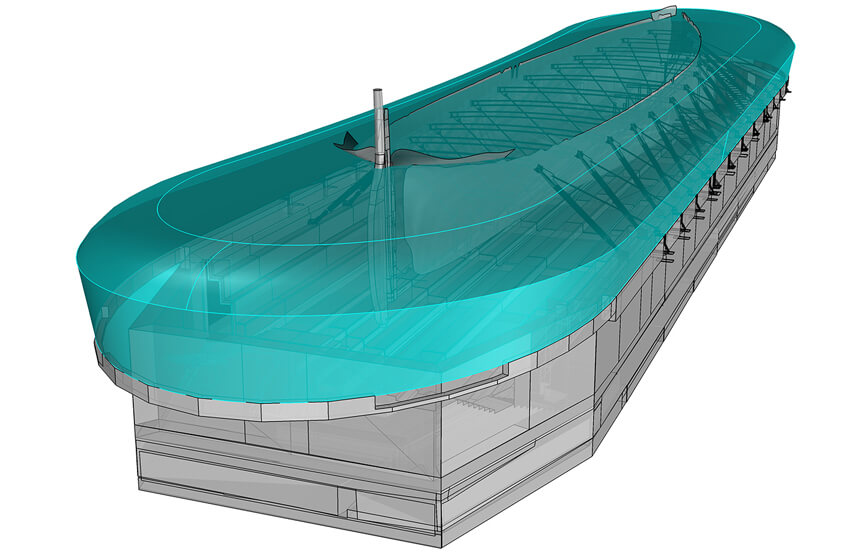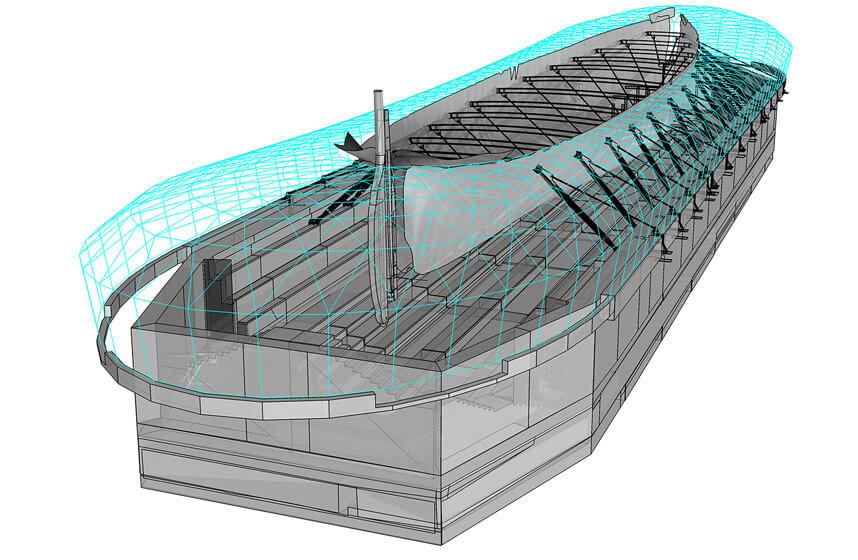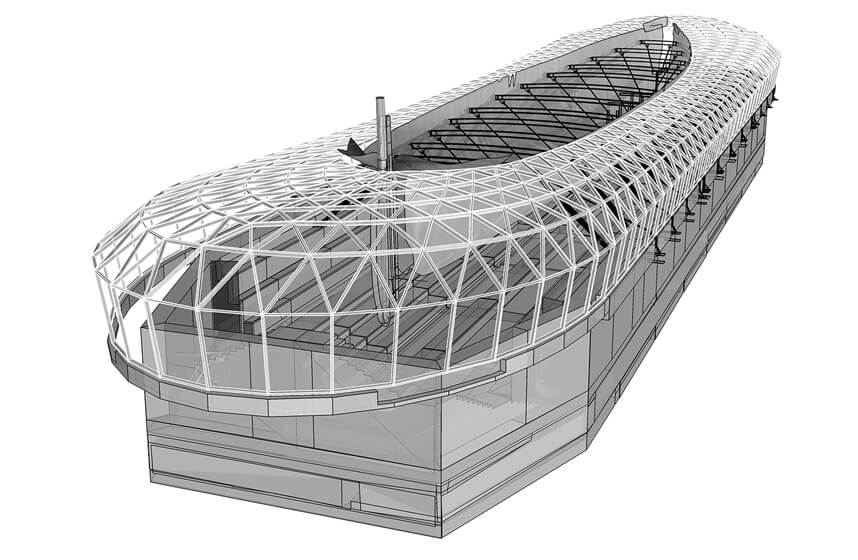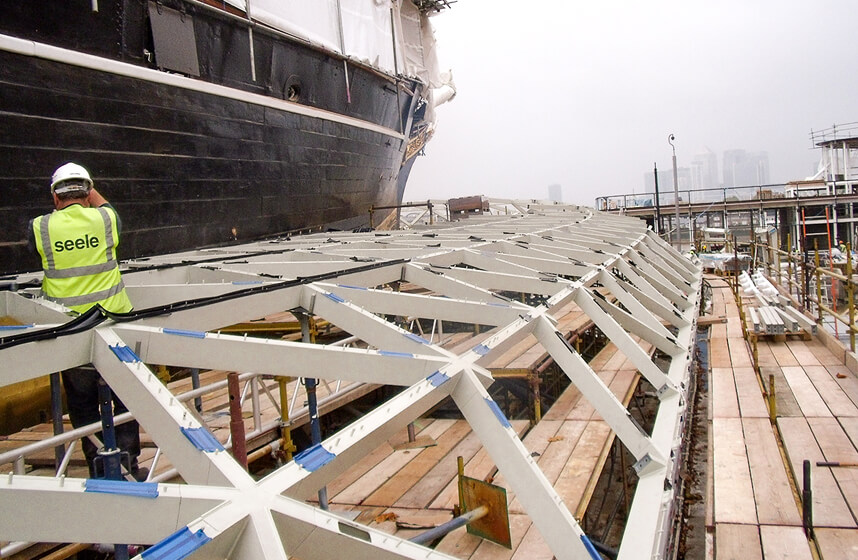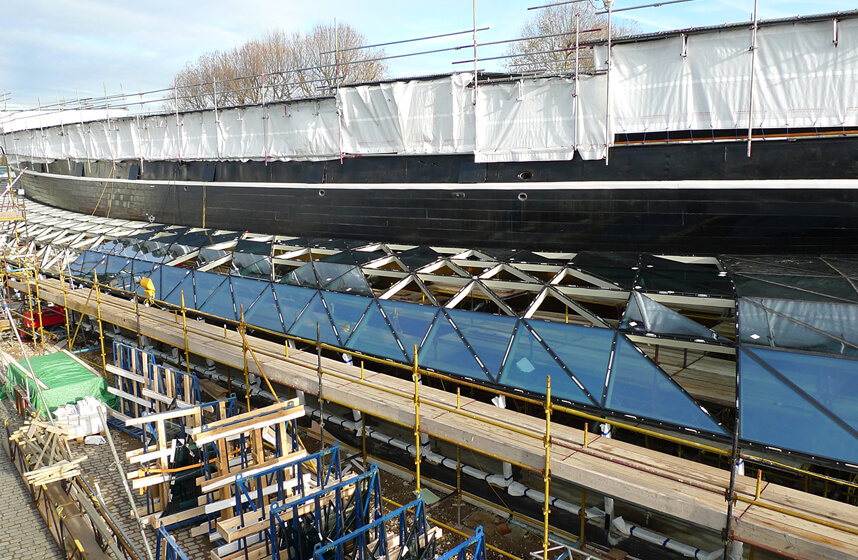At a 9° outward angle, the filigree glass canopy rises above the ground and then curves back towards the ship at a steep angle. Its height varies from 1.9m in the centre at the ship’s beam to around 2.9m at the bow and the stern, resulting in a multiple curved shape. The supporting structure consists of hollow steel sections bolted together via six-way nodes. The triangular insulated glass panes are attached to the substructure by non-visible point fixtures located in the space between the panes. A variation on this basic structure has been used on the angled sides of the canopy, which rise up from floor level and consist of 2m wide trapezoidal elements joined by five-way nodes accordingly.
Right from an early stage, seele was called in as consultant when planning the roughly 90m long and 20m wide curved glass canopy. seele developed a freeform lattice shell structure based on triangles with sides approximately 2m long.
Reference overview and Header image: © Jim Stephenson
